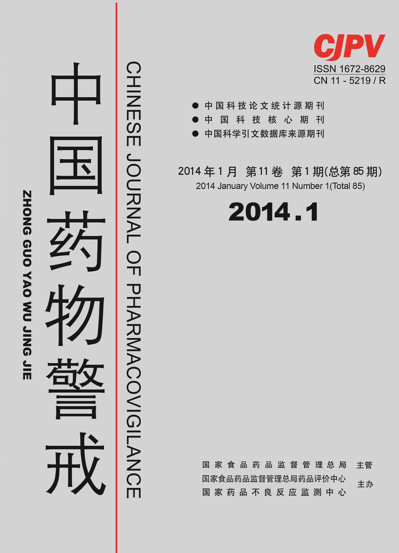|
|
Statistical Analysis on the Adverse Reaction of Toxic Chinese Medicine Based on the Affected Organs and the Frequency of Occurrence
WANG Yi, SUN Rong
2014, 11(1):
23-26.
ObjectiveTo provide literature data for clinical monitoring of adverse drug reactions based on analyzing the affected organs and the frequency of adverse reaction of toxic Chinese medicine. MethodsReports about adverse reaction of 83 toxic Chinese medicines recorded in pharmacopeia according to traditional Chinese medicine(TCM) category were collated, analyzed and summarized. ResultsThe adverse reaction of toxic Chinese medicine involved nervous system, circulatory system, blood system, digestive system, respiratory system, urinary system, reproductive system, skin and accessories. For analysing the frequency of adverse reaction of toxic Chinese medicine, the most common adverse reaction was nervous system and the percentage was 23.6, the second one was digestive system and the percentage was 23.3, decreasing order was circulatory system, respiratory system, urinary system, reproductive system. skin and accessories. ConclusionNervous system and digestive system were the primary systems, the adverse reaction of toxic Chinese medicine also appeared at circulatory system, respiratory system and so on. Make clear the affected organs and the frequency of adverse reaction of toxic Chinese medicine, which has great significance for clinical rational use of these drugs and effective prevention and control of the adverse reactions.
References |
Related Articles |
Metrics
|
